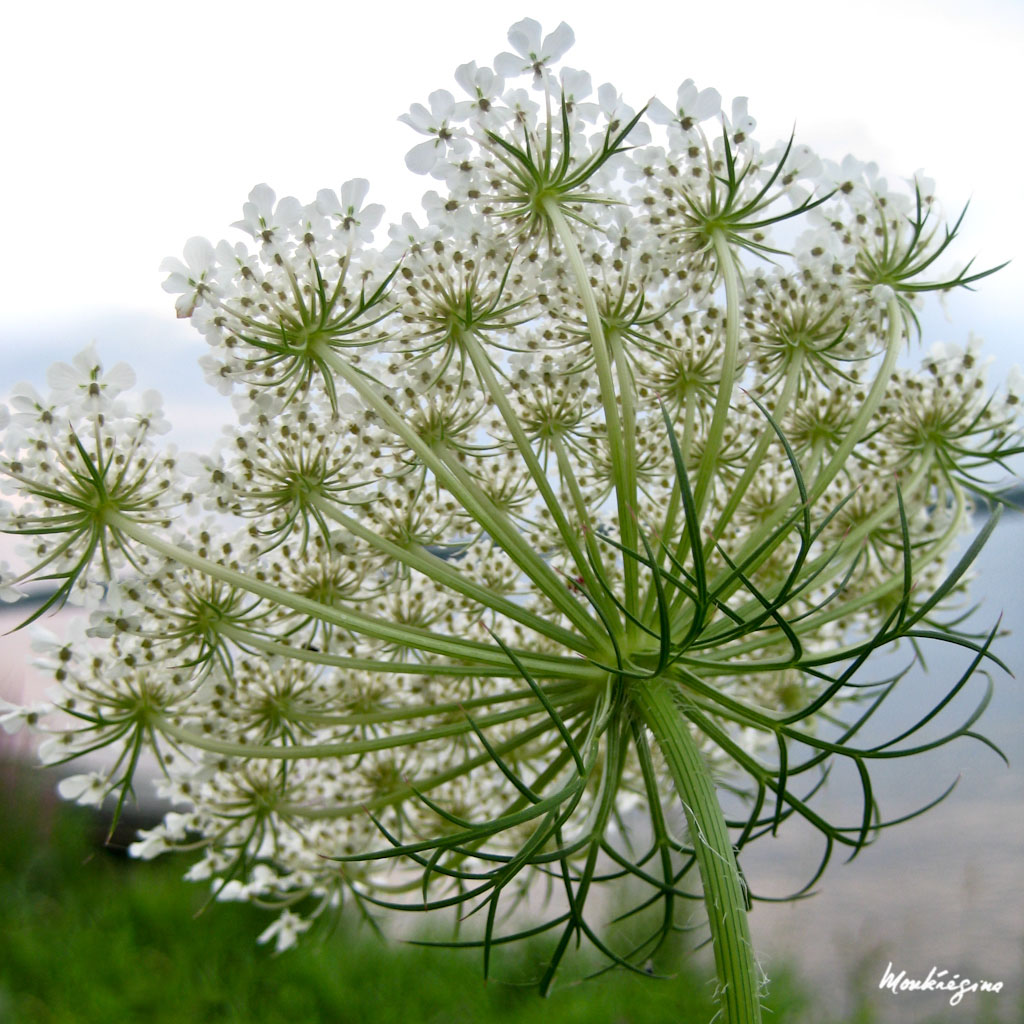Lomatium cous
Apiaceae (Parsley Family)
Look for Cous Biscuit-root blooming now in dry, open sites around Missoula (check out the face of Mt. Sentinel). It's a small, rhizomatous perennial, usually less than 25 cm tall, with yellow clumps of flowers and lacy leaves spreading prostrate along the ground.
Lomatium is highly typical of the charismatic Apiaceae family: deeply dissected, aromatic leaves and big chunky taproots. Remind you of a carrot? It might also remind you of our other native Lomatium (L. dissectum, Fern-leaved Desert-Parsley), which shows the same characteristics, only bigger.
Queen Anne's Lace (Daucus carota) umbel
The clumps of flowers (aka inflorescences) of Apiaceae are known as "umbels" and resemble an upside-down umbrella, with many short flower stalks (called pedicels) arising from a common point. Think of the familiar umbels of flowering dill in your herb garden.

What's in a Name?
Lomatium is the diminutive of the Greek root Loma, "border, fringe" in reference to its winged fruits (similar to those of Lomatium macrocarpum, pictured here. Cous (pronounced "cowse") comes from the Nez Perce word for the peeled, dried root, qáaws.
 Tidbits: All species of Lomatium are edible, but not to be confused with their extremely poisonous cousins, the Hemlocks (Cicuta and Conium species). The tuber-like root tastes a bit like sweet parsnips, and can be dried and ground into a flour for biscuits and bread. It was a staple food for Lewis and Clark, who knew it as chappalell according to their May 1806 journal entries:
Tidbits: All species of Lomatium are edible, but not to be confused with their extremely poisonous cousins, the Hemlocks (Cicuta and Conium species). The tuber-like root tastes a bit like sweet parsnips, and can be dried and ground into a flour for biscuits and bread. It was a staple food for Lewis and Clark, who knew it as chappalell according to their May 1806 journal entries:"This plain as usual is covered with arromatic shrubs, hurbatious plants and a short grass...there is one which produces a root somewhat like the sweet pittaitoe."
"This root they collect as early as the snows disappear in the spring and continue to collect it untill the quawmash supplys it's place which happens about the latter end of June"...
Wild gardening: An early spring wildflower with high drought tolerance and low fertility needs. Members of the Apiaceae family are great companion plants, attracting ladybugs, parasitic wasps and predatory flies that prey on insect pests.




No comments:
Post a Comment